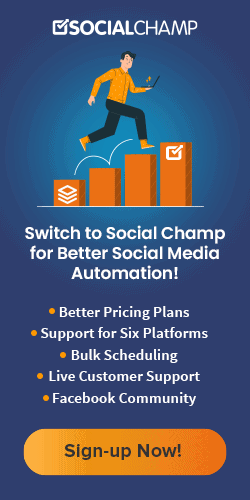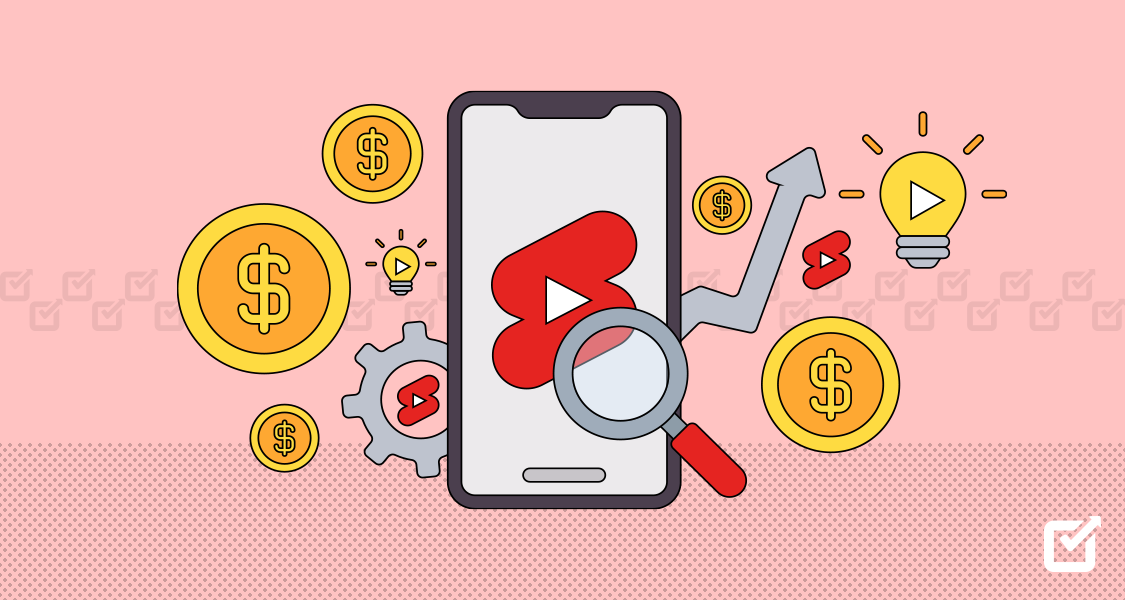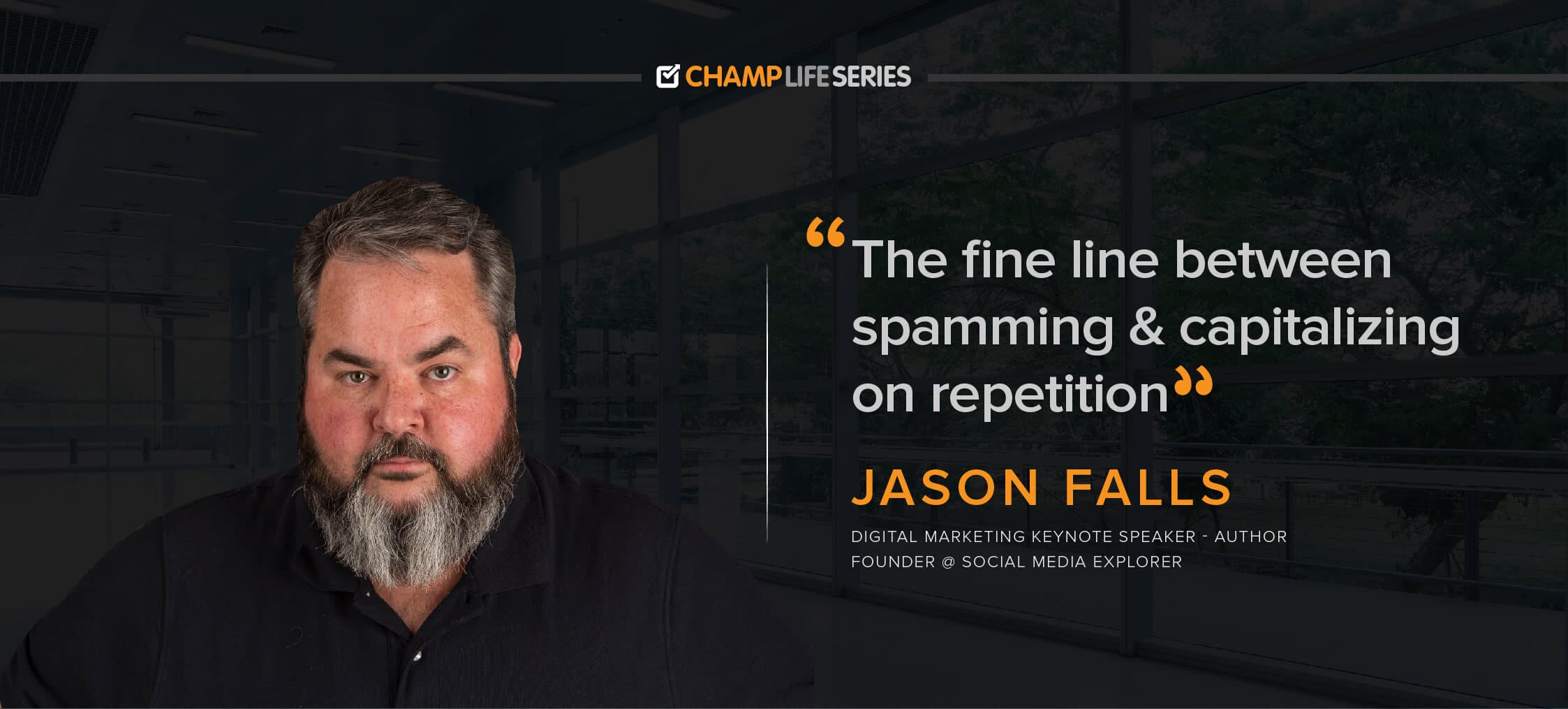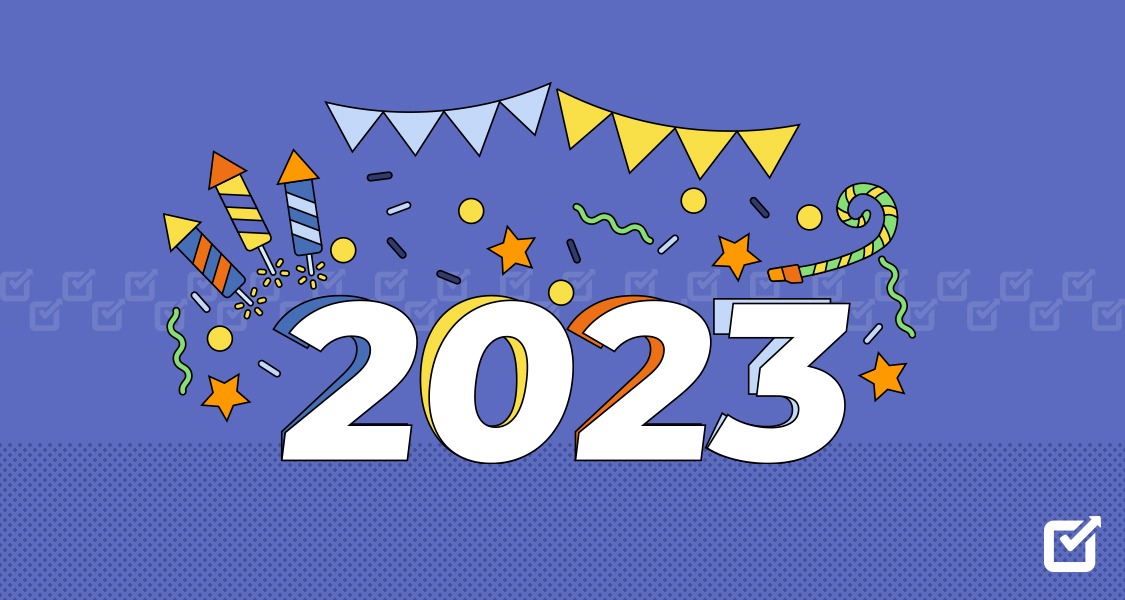Clickbait marketing has always been a point of confusion for marketers. For some, it has been a great source for driving traffic to their website, but a few may object to using it as part of their marketing strategy due to its nature of being deceiving for the audience. In order to truly understand whether this practice is ethical or not?
We reached out to our community to get their thoughts on what they had to say about using clickbait marketing as part of their marketing strategy.
Let’s hear what they had to say!
So we popped this question in front of the social media community, and here is all they had to say!
Community’s Take On Clickbait Marketing
Mudassir Ahmed
Founder at Blogging Explained
When you develop a solid product that matters to people, drawing them to your website/blog with the clickbait strategy is ethical. Clickbait should educate and engage your readers so you can generate a relevant and potential audience that could ultimately grow your brand presence.
When you design a clickbait solely to bring people to your content that has little or null value to offer, the people will immediately leave your page, which can increase your bounce rate and affect your SEO eventually and brand reputation.
To conclude, when analyzing your content performance, try to look beyond the clicks and traffic. Focus on metrics that help you review how your content adds value to your audience. As an entrepreneur, going transparent and with integrity may take time to grow, but it yields stable results and builds a great brand in the long haul.
——————–
Nikola Roza
Content Marketer and SEO Expert
Clickbait marketing is a thin needle to thread on. It’s most often done wrong, but occasionally a brand can pull it off spectacularly.
What’s the difference?
Clickbait titles that precede fluff, thin and valueless content are a disaster for the brand because people who click will get disgusted by what they saw, and also by them not being able to resist the title.
And they’ll remember the brand that made them feel guilty and sick in the gut (that’s you).
However, clickbait titles that are followed by superb content can be good because they can attract 2 types of clicks.
The first type is people who’re susceptible to clickbait and who’ll click, consume the content and love it.
The second type is people who can immediately tell clickbait titles from the rest, but will still click because they can see it’s your brand calling out to them in the SERPS.
And they know that behind your clickbaity title there’s substance and not just fluff.
So clickbait marketing can work, but the key is to provide real value so that those people who click don’t regret it and start to promote your content naturally.
——————–
Shad Elia
CEO at New England Home Buyers
Clickbait is a deceptive or false advertisement that employs hyperlink text, a graphic image, or a photo to draw attention and compel visitors to visit a certain web website. Clickbait is prevalent, and even if we are aware of the strategies employed, we are nevertheless attracted to click.
It’s a highly effective (and cheap) approach it plays on our basic need for curiosity through visuals or titles to ‘bait’ us into wanting to find out more by stunning or surprising us, leaving us on a cliff-hanger, keen to discover just HOW different the cast of the Goonies looks now.
——————–
Jay Soni
MD at Yorkshire Fabric Shop
There is no such thing as bad PR. This will be beneficial for clickbait stuff, However, it should not be merely clickbait.
Assume you’ve spent a lot of time and effort creating fantastic content. However, the title is archaic, Nobody would want to read it. Consider the same content with a snappy headline. Isn’t it worth a lot of money?
As a result, clickbait is acceptable, but the material should be important, Otherwise, it will have the opposite effect. People will lose faith in your personal brand or website.
——————–
Morshed Alam
Founder & Editor at Savvy Programmer
Clickbait marketing is a tried and true method for getting people to visit your website, but it’s important to keep in mind that not all visitors are created equal.
Brands should be wary of how they use clickbait tactics because there are some consumers who won’t hesitate before clicking away from an advertisement or banner without reading any further content on the page. The good news is this provides an opportunity for brands with more creative advertising strategies; one example would be using video advertisements instead of text ones (to increase watch time).
——————–
Dan Close
Founder & CEO at We Buy Houses in Kentucky
*Driving Traffic to a Website*
Because clickbait is designed to entice clicks, it will drive traffic to your site. Whether or not your content meets the expectations determines
how much traffic you get. Check to see if it delivers on its promise of a high-quality page.
Making your content less advertorial is the greatest approach to avoid an immediate bounce. People dislike advertisements, according to the New York Times. Our audience is more inclined to click through to the rest of our material if our content is less salesy.
——————–
Mark Osborne
Managing Director at Windows Doors UK
*Attempting Viral Marketing*
The keyword here is attempt, because no one can guarantee that a piece of content will become viral and be shared widely. Smart clickbait, on the other hand, can entice people to contribute information.
While this does not guarantee that your piece will go viral, it may encourage more people to share it, increasing its visibility.
The more people that see your material, the more likely it is to take off and get viral. The attention-getting headline makes it easy to persuade
people to read.
——————–
Sameera Sullivan
Owner at Sameera Sullivan Matchmakers
Over the years, I’ve delved into numerous forms of marketing, and let me tell you, clickbait works – to an extent!
Using that 0.01-second window.
By nature, humans are good at making snap judgments. Considering the social media usage in the 21st century, it’s become harder and harder to book a prime spot where you know people will be watching – and even harder to get them to retain what they saw.
Distractions are every marketer’s curse, and you want to ensure you get your money’s worth. Clickbait does just that and ensures your message is seen. But is it able to make an impact?
Choose wisely.
When you try to incorporate clickbait into your marketing tools, you have to be extremely specific about the direction you want to take. That means figuring out exactly what you want to put out – because it can be seen as distasteful just as easily as it can become a hit.
It’s a very thin line to walk on – one that you need to ensure hits a few essential metrics, keeps up with the latest trends, and avoids any insensitive content. If you’re able to mix both of these together well and believe me it can take practice, you have yourself a successfully planned outreach program.
——————–
Dustin Porreca
SEO Manager at Elevate Demand
Clickbait Get Visitors, Not Customers
Even if clickbait headlines are successful in attracting users to a website, this does not guarantee that the company will profit. Users who find themselves dissatisfied with the site’s content, which is a common reaction to clickbait, will immediately leave.
This results in a very high bounce rate, and even those that remain are unlikely to be interested in clicking on any products, much fewer adverts, on the website.
Companies should not advertise in order to increase the number of pageviews on their website. Sales funnels are designed to ensure buyers are taken all the way through the process, not just to one page on the site and then forgotten about. Because it is self-defeating, clickbait is an ineffective marketing strategy.
——————–
Chris M. Walker
CEO and owner at Superstar SEO
Before I answer this, it’s important to define the parameters of what can be considered clickbait. All forms of marketing have to have something that pulls the audience to it; otherwise, it would hardly be effective. However, it is generally understood that there are certain forms of marketing that entice users to click in a misleading way. This is what we usually consider to be clickbait.
In a way, clickbait is just a notch higher ethically than dark pattern marketing. Both forms of digital marketing scream the lack of authenticity
to me. It’s the work of marketers who don’t really care what the experience is like from the users’ point of view. All they care about is that they can report clicks, traffic, and engagement to their clients, which are the businesses being advertised in these deceiving materials.
Businesses should be wary about working with marketers who use these tactics because it will never work out well for them, and it’s the
businesses that suffer because it’s their brand that is being seen by the users. As far as the users are concerned, that brand is untrustworthy. The marketer, on the other hand, had already lined their pockets.
——————–
Devon Fata
CEO at Pixoul
Overall, I would say that clickbait marketing doesn’t help brands. While yes, it may entice readers to click on your post or visit your page, it will be more successful at breeding mistrust. If a person clicks on your post or ad expecting to read about something but upon further reading finds out you lied to get them there, you will have broken their trust.
If a person feels they cannot trust a company, they won’t provide it with business. So, when it comes to brand image and brand trust, clickbait marketing does not help at all.
——————–
Scot J. Chrisman
CEO at The Media House
Click baits do help brands lead the market towards their website but it is not that effective when it comes to conversion rate. This is to consider
that visitors are driven by some expectation that is different from what they will see upon clicking the link. But, the opportunity that it gives when it comes to traffic can be used to improve a websites’ strategies.
Since click baits are good at catching attention, the initial interest that the market has can be a good start to engage them by presenting much more interesting content. Though it seems tricky at first, there is still a high chance that clickbait can be a good marketing strategy.
——————–
Paula Glynn
Director of Search Marketing & Digital Strategy at Pixelstorm
From my perspective, clickbait marketing helps brands, especially when it comes to getting attention on social media. By using provocative headlines and images, brands can get people to click on their links and learn more about what they’re selling. While some people may think that this type of marketing is deceptive or dishonest, it’s a very effective way to get people’s attention.
Consumers are bombarded with ads and content from countless brands in today’s digital age. That’s why it’s so essential to create a headline that will immediately capture their attention and influence them to click on your ad or link.
——————–
Nick Antonopoulos
Founder at SEO Design Chicago
Typically when we hear the term “clickbait” we think of those annoyingly misleading titles for YouTube video searches. We might find ourselves stumbling upon a video that has nothing to do with the initial subject. But is all clickbait bad? The simple answer is no.
Clickbait—when used properly—can actually prove to be a pretty effective marketing tool. Let’s say you’re eager to draw in more traffic to your
website. You can use clickbait as a marketing strategy by plugging in your site via links on other popular websites. All in all, clickbait is a marketing tactic that is employed as a way to attract more users to click on content.
Over the past ten years, the world has seen a rapid change in how we use the internet. One of the terms or techniques that has risen out of the digital age is clickbait. Clickbait is clickable content, such as an internal or external link or a misleading irrelevant title, meant to distract users away from their initial search. Many users and websites look down upon those who use clickbait to gain more likes, views, and followers.
For instance, top dog social media sites like Facebook have enacted tightly secure algorithm security methods to identify that the majority of its site users do not like clickbait. Thus, a preference and utter disdain for the practice has caused other social media giants like YouTube to ban the practice. You have probably seen clickbait examples like “Shocking new evidence” or “Wait until we show you this.” But that video might have been followed by a video that does not live up to the hype at all.
Illegitimate news sites also use clickbait marketing to gain a mass following. For instance, news sites that over hype their headlines but then include an article that does not line up to the expectations of the reader’s interests. Clickbait certainly is not a brand new topic. You’ve probably already encountered clickbait several times before reading this article. Nevertheless, we will still discuss how to apply clickbait in the marketing world. But first, let’s dive a little deeper into why clickbait got its bad reputation.
Announce New Products
One strategy many companies will use in their SMS marketing campaign is to use text marketing to announce new products. This is a great way to get the consumer’s attention and get them invested in your brand, especially if you announce the new product first through text message. Consumers want to feel like they are a part of something exclusive. This also encourages additional consumers to sign up for the text message list.
If your company specializes in exclusive or limited amounts of products, this could be a really effective option for you. Consumers will want to know exactly when a product launches if you are limiting the amount of the product you sell. Make sure that when you announce the new products that you provide a link for consumers to easily access the new products. You want to make it as accessible as possible for the consumer to make a purchase if that new product is appealing to them.
How is Clickbait Used?
As previously mentioned, clickbait can be used in the form of an enticing headline. It can also be used in the form of an eye-catching image or a brilliantly descriptive caption. Let’s talk about clickbait images for a moment. You are probably familiar with the phrase “a picture is worth a thousand words.” When clickbait is used via enticing photos, it can be very useful to the site administrator to gain more traction to the site.
Captions are another form of clickbait. They provide a brief descriptive snippet of the story behind the photo. Nevertheless, if the user is not satisfied with the actual story or article paired with the captioned image, then the site will end up losing the user’s trust. Ultimately, clickbait can cause a site to lose all of its credibility if the company does not use it properly.
Clickbait also has a bad reputation because it is inherently very misleading at times. Let’s say you are in an emergency situation, and you need to quickly look up a “how-to” video on Youtube. If you come across a video claiming to teach you how to save a life with CPR, then you might be fairly disappointed to find that the video is a vlog about visiting a pharmacy. In fact, the video only references CPR once by default, because of the vlogger briefly mentions a CPR kit found in the store. This type of misleading content can be very frustrating to stumble upon. Especially, if you are frantically trying to save someone’s life with a video tutorial.
——————–
Jeremy Goldman
Founder and CEO at the FUTURE PROOF
Yes, it works. However, the point is to make it right. Optimizing the clickbait that fits the content of your business and brand draws more
attention, page views, and web traffic as well. Also, it helps in expanding sharing content on different social media platforms which helps in increasing awareness of the brand.
——————–
Daria Maltseva
Head of Product at KeyUA
As seen from its denotative meaning, clickbait does what all content marketers want – it helps “attract attention and encourage visitors to
click a link to a specific web content.”But clickbait doesn’t should live up (or down) to those negative connotations, others say. Clickbait is primarily want to drive page views on websites, whether for his or her own purposes or to extend online advertising revenue. It can even be used for phishing attacks with *the aim* of spreading malicious files or stealing user information.
When done right, though, clickbait is one in all the foremost effective ways to urge people’s attention and drive traffic towards your content. What’s important is once you get them to your site, you offer quite just a catchy headline.
——————–
Oleh Sorokopud
Head of Digital Marketing at Softjourn
The main goal of clickbait is to get the maximum number of users to click on a headline, banner, link, or video. Therefore, a high CTR, the ratio of
clicks to views, is essential. In essence, we are talking about a teaser to the following content, which is most often irrelevant to this very teaser. Hot headlines are used to profit from online advertising and sell products or services.
From a psychological point of view, people subconsciously form certain, usually inflated, expectations that must be realized after the click.
Clickbait is designed to appeal to primitive reactions, arousing interest at the level of emotions such as curiosity, anger, envy, empathy, fear.
Usually, the term clickbait is used in a negative context. Professional marketers, copywriters, editors, and SMM are justified in thinking it is a
blue talk.
It is possible to get traffic with clickbait, but this approach undermines the credibility of content authors and the brand they’re representing. The
user’s expectations diverge from the actual information he receives, which causes him a wave of resentment. Clickbait also increases the bounce rate on the site, forcing search engines to lower the resource’s ranking, which causes lowering positions in the SERP.
Many users have developed an immunity and clickbait-blindness. They simply ignore such advertising and headlines. And if they do, users don’t click on them, knowing full well that they won’t get what they expect.
——————–
Tatiana Gavrilina
Content Marketing Writer at DDI Development
As a regular person with moral principles and values, I consider clickbait to be evil. It can be compared to bank loans. Those people who purposefully give credit and use clickbait headlines or CTA clickbait buttons are committing a small crime, because they are provoking people, pushing their weaknesses. In my opinion, this is unacceptable. Now let’s think about how consumers like me would react to clickbait-style brand advertising? I think negatively. I will not make a purchase from such brands and will consider them unworthy.
As a marketer, I understand that there is a huge percentage of consumers on whom clickbait works the way the brand uses its plans.
Yes, in this case, the brand can benefit from clickbait. There will be sales, there will be money, but the reputation may suffer. And here the brand must decide for itself what its priority is.
——————–
Mehvish Patel
Content Writer at Zen Media
I believe clickbait does work in drawing attention very quickly and easily. Clickbait titles definitely increase bag views and are a good way to get a user interested in your brand. However, I think clickbait can only work so much. If you’re a brand that is constantly publishing clickbait then at some point or another people will stop interacting with your content. It is not a long-term strategy for sure, but it is a great stepping stone when used correctly and efficiently.
——————–
Darren Jamieson
Technical Director at Engage Web
I believe the key is to take some of the engaging hallmarks of clickbait such as intriguing titles (often question-based) and striking imagery but back them up with high-quality content that doesn’t make people feel they’ve wasted their time by clicking through to your site. That way, you appeal to both your audience’s primal urge to click, react and share, but also feed their brains with enough quality material to ensure they stay on your site, bookmark it and return in the future.
——————–
Shiv Gupta
CEO at Incrementors Web Solutions
In the age of misinformation, clickbait gets a bad rap because it’s associated with fake news and online misinterpretation. Still, it is one of the best ways to get attention for your content and drive traffic to your website. Clickbait is more than content written to boost clicks. It is an automatic of getting the reader’s eye on content and continues to succeed more than people think.
——————–
Andrew Weisz
CEO at Finden Marketing
Personally, it really depends on the brand and industry. Some industries have more leniency to people posting clickbait articles (such
as journalists, marketing agencies, and financial gurus). On the other hand, if a bank is putting out clickbait marketing it can definitely hurt their image.
——————–
Brenton Thomas
Founder and CEO at Twibi
Clickbait marketing is older than online media, dating from the dawn of printed newspapers. When newspapers were fighting to attract readers, they found that they could use catchy headlines to entice them. Also, clickbait can be leveraged for good if you offer real value within
your article, avoiding the use of a misleading headline to get page traffic. When using these strategies, focus on your users’ pain points to
create content that will be educating and exciting for them.
——————–
John DiBella
CEO at Net Local
As an SEO specialist, I’m convinced that clickbait is the work of the devil and was devised by internet demons who whispered the idea for it in the ears of its creator while they were sleeping off the effects of a hangover.
It drives mainstream users crazy, which ends up hurting the brands that it’s supposed to be helping to promote. It’s a double-edged sword that ultimately won’t help and will only damage the brands that insist on using it as it’ drives the target audience away from, instead of to, the companies who use it as part of their advertising and marketing campaigns.
——————–
Andre Palko
Founder at Small Business Rainmaker
When Readers Can Forgive Click Bait: There is a fragile marketing equilibrium that can be achieved for brands with the right kind of clickbait. I’ll explain.
When done solely to get clicks, it is at best a short-term, scattershot solution to getting traffic. Because the goal is to simply get clicks, the right messaging to the target audience is missing or confused. The worst-case from clickbait is that it wastes ad budgets and alienates the ideal audience.
However, when a company has developed it’s messaging and has a basic strategy in place, the fact is, they need to get attention for their content and hit all the right chords with the headlines. That’s when a delicate dance with clickbait can pay off. When headlines grab the readers and get them to click, and THEN deliver high value, it will help the brand. Readers can then forgive a bit of baiting.
——————–
Devin Schumacher
Founder at SERP
The effectiveness of clickbait marketing is heavily context-based, to be honest. If you are in an incredibly competitive market that requires people to take action immediately (ex. e-commerce space on a payday sale or time-sensitive types of campaigns), this is actually beneficial. You need people to take action quickly and you do not need to establish too high of authority as part of fostering brand loyalty for such cases.
The problem usually begins when digital marketers use this tactic as their main go-to and apply it in other industries where it’s not really appropriate or suitable. For example, if the industry is something incredibly serious (ex. financial markets-related like trading crypto or stocks, something in banking, etc.) you can expect that consumers or the target market here will be sensitive to security and will be very upset if led on by a clickbait marketing tactic.
——————–
Lane Rizzardini
Co-Owner at Marion Relationship Marketing LLC
Does Clickbait Marketing Help Brands?: For clients that want to build long-term relationships with customers based on a reputation for quality and honesty, clickbait marketing is the opposite way to go.
Clickbait implies an obvious goal: to get a click. For our local business clients, a sale or booked appointment is the end goal of marketing, not the click. If you bait people to click (which usually costs money) but the searcher doesn’t find the website or the business actually able to back up the claims of the ad, it’s wasted money. Or worse, the experience is a let down and the result is negative reviews and a bad reputation in the community.
A proper, compelling ad conveys real results and promises a business can deliver. Examples of compelling headlines (if based in fact) that generate clicks that convert into customers:
1. We’ve saved our customers an average of $7000 on their taxes. Call for a free tax analysis.
2. 95% of our customers save on their energy bills after a tune up from Dave’s Heating & Air. Call for our $195 AC tune up special.
3. Do you snore? Take our free sleep apnea screener. Takes 5 minutes and is 92% accurate.
Shortcuts are short term, but a smart business owner knows success requires a long term game plan. Find what you do best, quantify it, and use that rather than some unsupported clickbait.
——————–
Nicholas Rubright
CEO at New Reach Marketing
Clickbait can work sometimes. There just has to be something on the other end to fulfill the bait portion of it. If someone clicks through to a
page expecting something and is then disappointed, they bounce, and you just have useless traffic.
——————–
Mile Zivkovic
Head of Content at Better Proposals
My opinion of clickbait is – as long as you deliver on the promise, it’s all good. If your article has the parts you’re promising in the title, you’re in clear. In that sense, I think that when used correctly, clickbait can help you increase traffic. It’s important not to go overboard since people will get tired of the set-up really quickly.
——————–
Roshni Wijayasinha
Founder at Prosh Marketing
Clickbait marketing is misleading and is considered an unsustainable approach to reaching new audiences. Effective marketing stresses the importance of providing value to customers. Brands who decide to go with clickbait marketing put quantity above quality and usually risk losing what’s most important – a customers’ trust.
——————–
Dapzury Valenzuela
Marketing and Art Direction Professor at University of Advancing Technology
Clickbait marketing is another digital strategy used to attract potential customers. This type of content typically uses misleading and sensationalized headlines to entice readers to engage. This leads to disappointment when the article, video, or other multi-media content doesn’t deliver on its claim.
The effective use of marketing is – and always will be – most effective when it is based on valuable and authentic content that resonates with your target audience. People are connected more than ever before and inundated with thousands of advertisements on a daily basis, which makes them quick to dismiss content that seems, too good to be true. Creative marketers are tasked with using the data collected via their brand platforms to recognize patterns and create/curate content that educates, entertains and connects people.
That is ultimately what we want out of digital content, so why risk it with clickbait tactics that misinform and mislead people? Yes, some may argue that clickbait can attract leads to your site, but more often than not, if the content doesn’t fulfill expectations, you run the risk of losing a potential customer. Brands need to focus on their own story and leverage brand advocates to share their excitement of a particular product or service.
We are living in an ever-changing digital landscape with a multitude of media options growing at an exponential rate. Having a well-established brand that is founded on a mission fosters more long-term relationships between your brand and your customer.
——————–
Geoff Crain
Digital Director at Kingstar Media
There is no one size fits all answer. Clickbait marketing is tactic and KPI specific. If the goal is to increase site visits or build a large remarketing pool, then clickbait marketing is very effective. However, it will lead to a high bounce rate and lower time on site. So, if the goal is to build sustained traffic and sales, clickbait marketing is not effective as it will not lead to valuable site visits.
——————–
Matthieu Fauveau
CEO at Alterable
In recent years, clickbait marketing has become a real trend on the web, particularly on social networks like Facebook and Instagram. But this strategy is used in many other areas, such as e-commerce and e-mail marketing. Sometimes it’s also called the curiosity gap technique because its primary objective is to arouse the curiosity of Internet users and encourage them to click or share.
Clickbait marketing can be an effective weapon to increase your brand’s reputation. If you are successful, your CTR will rise, but side effects can ensue.
There are potential negative impacts of using clickbait marketing for brands, but there are ways to alleviate them:
- A viral effect that is often short-term. It’s often the case if the links point to a news article or if the content disappoints readers. To avoid this drawback, make sure your content is of very high quality.
- A high bounce rate. A page that records a high bounce rate is an underperforming, uninteresting page. It could affect SEO rankings if search engines detect that users are not staying on the page.
- Reduced credibility. Clickbait marketing can help you easily and quickly boost your audience, but above all, you need to avoid creating a “low-quality” feel to your website. Attract users with clickbait titles but make sure you retain them with qualitative content.
This technique’s reputation in users’ eyes can be damaging and do more harm than good. It is, therefore, necessary to use this strategy intelligently and with discernment. Sure, this technique can bring jaw-dropping results in record time, but the success doesn’t last most of the time.
If you decide to use clickbait marketing, make sure you consistently produce quality content, no matter what marketing strategy you use, so you can benefit from lasting effects, particularly when it comes to SEO.
——————–
We would like to thank all of our contributors for sharing their thoughts with us!
















































2 thoughts on “Community’s View on Clickbait Marketing”
Great article. I would give clickbait a minus ten out of ten.
Hi Fahad,
The main issue I have with clickbait marketing is that instead of putting the ball in your reader’s court, you try to manipulate them into doing your will. This is always a bad idea because it’s unethical, dishonest and for the few clips you get expect to receive a bunch of headaches from people who feel tricked and deceived. Scared bloggers try to trick people with clickbait because they fear they can’t get organic traffic by being honest.
Ryan